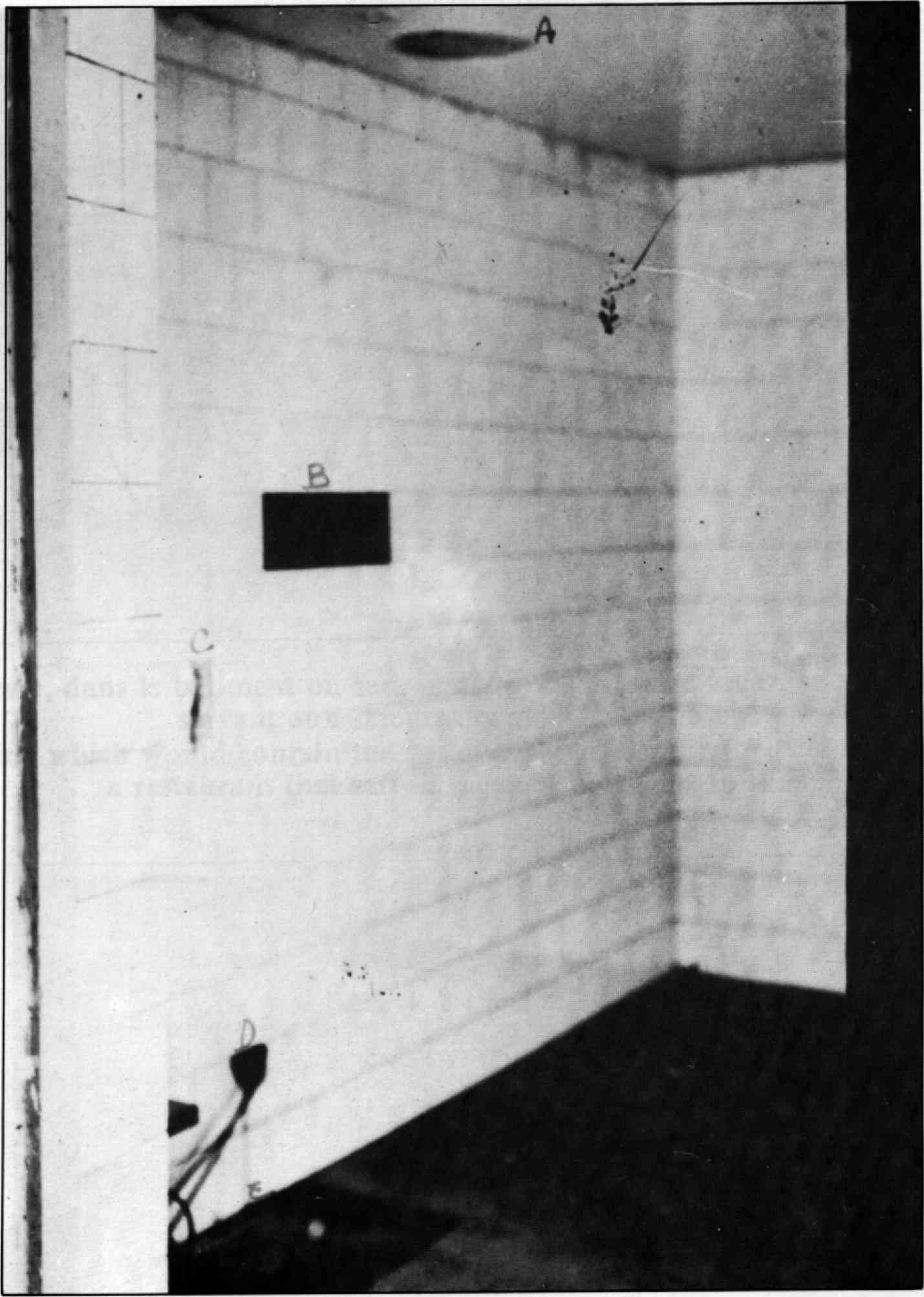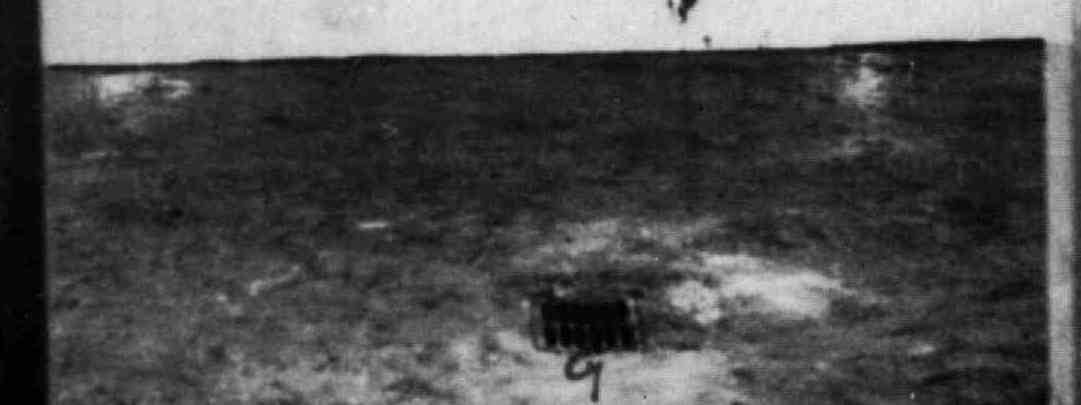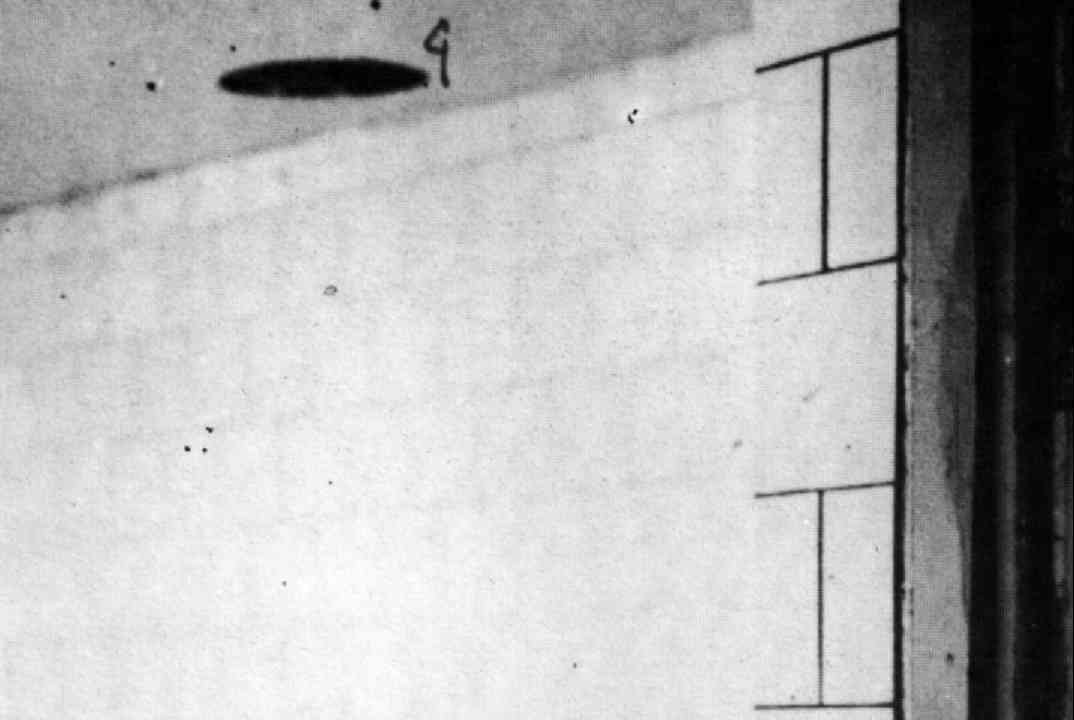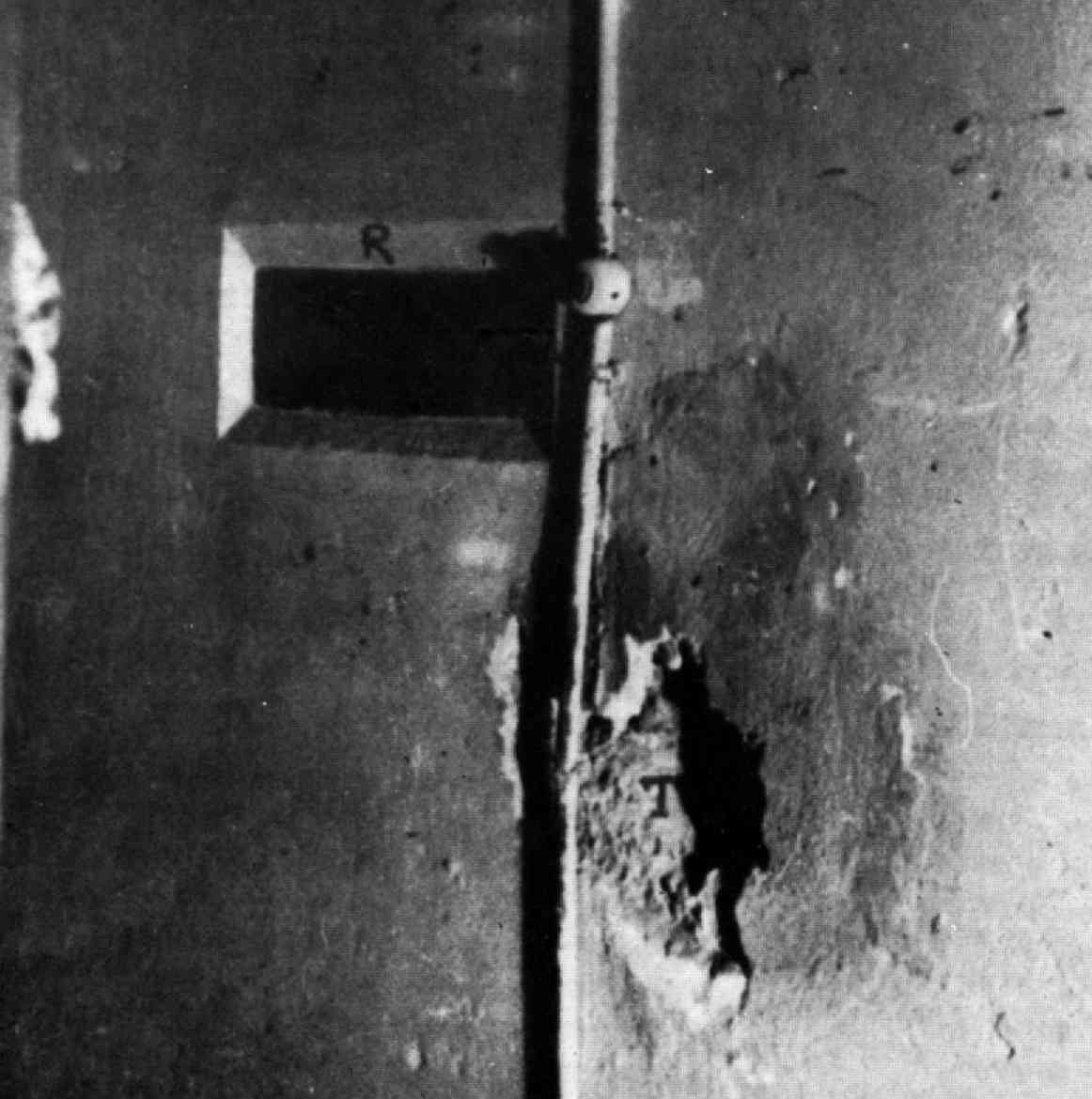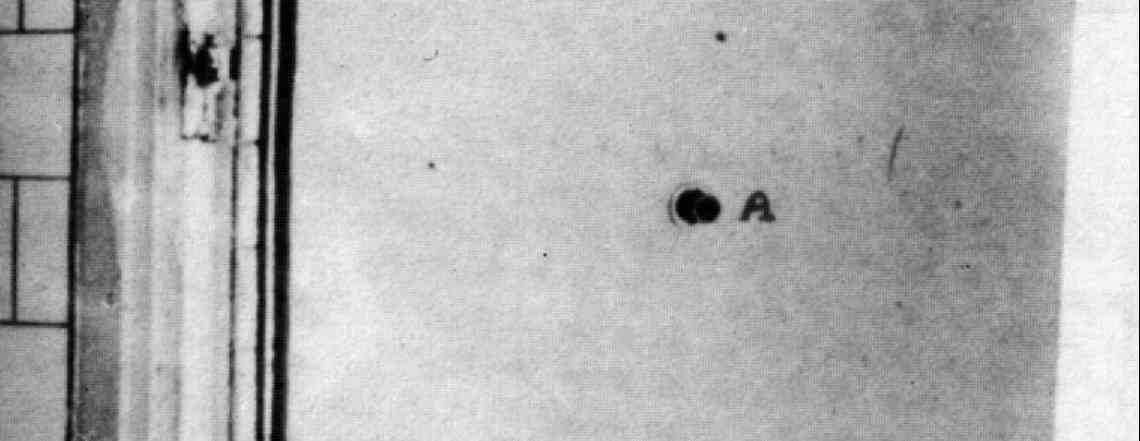 |
 |
THE MEANS OF MURDER
Struthof was the site of more than 12,000 or 13,000 deaths. In fact 42,000 people were taken in there, and about 40% of these people died, including 70 workers attached to it. Why therefore be so concerned about fewer than 90 deaths and their circumstances? For the same reason as the deniers. It is to show that these deaths were deliberate and not the result of a famine extending across all of Europe. It is to show that these deaths were not due to some necessary act of the war effort. It is to show finally that these deaths resulted from an ideological antisemitism belonging to the Nazis, and from their being resulted as "subhuman."
We know that the gas chamber of Struthof had been at first a simple cold room, then an airtight chamber intended for the training of recruits in wearing gas masks.
This item was therefore already airtight; it needed a few things to transform it into a gas chamber: a means of introducing some gas, a means of ventilation before opening the doors. The Germans added a glass viewport.
Here is the testimony of a detainee who installed the mechanism for introducing the gas, and who likewise supplied the work of Pressac (we use this source a lot because a few people like Mr. Pressac or Mr. Wellers had access to these historical sources in spite of the fairly strict French limitations on access to these documents, now with a waiting period of 60 years after the fact to become public; this testimony was provided to the Permanent Military Tribunal of Strasbourg).
Deposition by ex-prisoner Georg WEYDERT of Luxemburg regarding the installation, in the unused cold storage chamber at Struthof, of a device that could be used to make liquid flow from the exterior to the interior:
"while I was with the sanitary installations commando at camp Natzweiler, sometime between the spring and summer of 1943, I had to go to the gas chamber [The witness might seem to be anticipating the function of the room. It did not become a homicidal gas chamber until after the work he did there. But it is probable that it no longer served as a cold storage chamber at the time, and that the SS had already adapted it for training recruits in the wearing of gas masks.] on orders from the building directorate, to do some work there with the help of a prisoner of German nationality. Schondelmaier [an SS-man] was already there, and he told me to make a funnel out of sheet-metal, which was then attached to the outer wall of the gas chamber, on the corridor side, right next to a peep-hole for looking into the chamber. The small end of the funnel led into a pipe which passed into the chamber and stopped over a hole made in the concrete floor. A porcelain receptacle with a capacity of one or two litres was placed in this hole.
A tap was fitted into the piece of pipe immediately below the funnel. The purpose of this device was to pour a liquid--I have no idea what liquid --into the funnel with the tap turned shut, and then, at a chosen moment, to cause this liquid to flow towards the gas chamber and into the porcelain receptacle, where another liquid would have been placed in advance. [In fact, J. Kramer placed crystals in the porcelain receptacle.] The chemical reaction between the two liquids was to result in the release of toxic gas, designed to asphyxiate prisoners enclosed in the chamber. [The witness is extrapolating. How could he have known that the system would be used to gas prisoners? If he had such knowledge through an indiscretion, he should have said so and his deposition would thereby have taken on even more weight.]
My work was barely finished when Nitsche came along, in the company of a Wehrmacht doctor whose name I never knew.
After Nitsche had checked the work, he ordered me to install a grating, fastening it with care over the porcelain receptacle, so the prisoners enclosed in the chamber would not be able to move the receptacle.'' [The above remark applies again. Note that the receptacle had no drain and was immobilized by the grating, so any liquid it contained could not be poured out. This absurdity made cleaning a problem, and exemplifies the improvised nature of an installation that was to be used for only a short time.]
We do not follow Pressac in this argument. It was no more difficult to clean a porcelain cuvette of it contents than to remove crystals of Zyklon B from Krema 4 and 5, or the bunkers of Birkenau, since these were used multiple times; it was sufficient for an SS man wearing a gas mask to rinse the cuvette with a stream of water, and we shall see later that the gas chamber effectively had a central exhaust hole through which the products could have been drawn out as well as at Birkenau. The camp of Natzweiler had a system of sewers (by means of which a detainee had once tried without success to escape) and there is little doubt that this central hole would likewise be able to lead to a place far enough away that nobody was in danger if some gas continued to be emitted in case the chemical reaction had not completed. We do not believe therefore that the reaction would have been slow or incomplete if it involved liquid products: it would be sufficient that the products be slightly in excess in order to complete the reaction in less than 15 minutes.
The Nazis were pressed for time to build the chamber before the arrival of the 87 Jews. The daily report of 8 August 1943 of the person responsible for construction uses three times the word "Gasraum" and one time the word "Gaskammer" on the subject of the state of work.
Kramer himself cites from before (in a message from 12 April 43) a chamber "G-Zelle" that has a volume of 20 cubic meters and it turns out that the future gas chamber of Struthof has exactly a volume of 20 cubic meters; Hirt in a dispatch of 14 July 43 writes in a letter that "the material for gassing..." etc.
As Hirt had never seen anything about the training of recruits to wear gas masks, but was very connected to the work of the Anhenerbe and wished a collection of typical "Judeo-Bolshevik" specimens, the conclusion forced itself on a denier as honest as Cole, and it is useless here to play tricks with the meaning of Gaskammer, or Gasraum, or Vergasung, to propose an air-raid shelter or of coking of coal.
The documents are exact enough that we can say that the work cost RM 236.08. The "Tagebericht uber den Bautrieb" details the work; masonry in the chamber (without doubt the viewport and the filling-in of the introduction port); extension of the exhaust pipe; painting of the chamber.
![]()
![]()
Below the lighting (A) and the viewport (B) we see a hole (C) in the wall that is the trace of the gas introduction pipe hastily constructed (since it was not even stoppered). The electric outletfi further down (D) was after the gassing of the 86 Jews; it was used for experiments with phosgene gas and served to detonate the ampule containing the gas. Bickenbach said in his sworn statements that the prisoners were asked to break the ampule containing the gas themselves after walking around in order to avoid concentrated pockets of gas. Some witnesses in effect reported such things, but also some incidents (some "subjects" claiming to have broken the two ampules but in reality waiting for the start of the ventilation to break the second, as they dissembled), and the "protocol" could then be changed. As other witnesses spoke of an electrical mechanism breaking the ampule, it is plausible that Bickenbach wanted to get out of the accusation of having personally triggered the breaking of the ampule. Finally, at the bottom and to the right of the electrical outlet, one can faintly perceive the receptacle for cyanide compounds that was installed by the detainee Weydert (this difficulty is due to our document scanner and the receptacle is easily visible in the original photo).
The gas chamber was equipped with a drainage hole for waste water (noted below as G), able to be used to remove the residues of the introduction of cyanide salts in the porcelain cuvette:
![]()
![]()
This is the opening for exhausting the gas, equipped with a ventilation motor 4B50 with the brand name NVM, that drew one ampere at 50 Hz and had a speed of 1400 RPM (serial no. 342322):
![]()
![]()
Here is a detail of the view of the wall (seen from the corridor, because one cannot see the earthenware tiles and because the hole is at the right of the picture) after the SS had removed the pipes used to introduce the cyanide salts:
![]()
![]()
Because the wall is perforated here and there and because we know that at an earlier time the chamber was used for experiments with phosgene gas, then more recently for gas mask training, it is apparent that the SS removed the mechanism for introducing gas at the last minute leaving the chamber no longer airtight. If they only took the trouble to remove just that element and not the others, it's because they knew that the presence of the device in the chamber would be difficult to explain.
But they left the device in the camp itself and they recovered the funnel, the tap, the pipe installed by Weydert:
![]()
![]()
This can be understood: as this material was only used to add water, this funnel or the pipe would not have anything incriminating in it. And actually, the analysis found no traces of cyanide compounds (the pipe was also analyzed with negative results).
Just the same, since it could seem incriminating but was not, they didn't bother to remove from the door the rod that measured the amount of phosgene used during the "experiments" on the protective properties against phosgene that the Gypsies had recently undergone:
![]()
![]()
They originally thought that the rod marked (A) had served to introduce the cyanide: in fact it was used to control the amount of phosgene the Gypsies were subjected to.
Last modified: June 1, 2009
Technical/administrative contact: webmaster@holocaust-history.org
